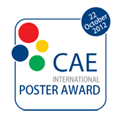
| |
EnginSoft - Conference Abstracts
EnginSoft International Conference 2009 |
Design Automation Framework for Micro Air Vehicles |
Amadori Kristian - Linköping University (Sweden) |
Abstract |
Design automation is of general interest in aeronautics, and automated methods for coupling aerodynamic calculations, CAD modeling, FEM analysis etc are getting an increased usage in the design of manned aircraft, but primarily during the conceptual and preliminary design phases. Completely automating the design, from concept to production is, however, far from possible. Mini or Micro Air Vehicles (MAVs), on the other hand, are small, simple to build, and requires relatively few components. This is an application where fully automated design can be implemented. This can be regarded as a stepping stone from which design automation of more advanced vehicular systems may be developed. The proposed work is centered on the automation of the design process of MAVs. A design optimization framework that links together a high-end CAD system (CATIA V5) for airframe design and a panel code (PANAIR) for aerodynamic evaluations has been developed. From a mission requirement a design specification is created. This comprises information such as performance, payload requirements etc. The framework then uses several coupled computer software’s to generate the geometric design in CAD, a list of off-the-shelf components for propulsion, and computer code for autonomous flight ready to upload in the intended autopilot. Such a framework is being developed at Linköping University. This paper is based on research and results previously published by the research team. It describes the experiences made so far, and demonstrates with a case study, how fully automated design is indeed possible for MAVs. The user is required to enter the initial requirements into the system that will then optimize the MAV design. The optimization comprises both discrete and continuous variables, and takes into account both the geometry and the propulsion system. Finally, a 3D printer is used for manufacturing of the aircraft. |
Back to index |



